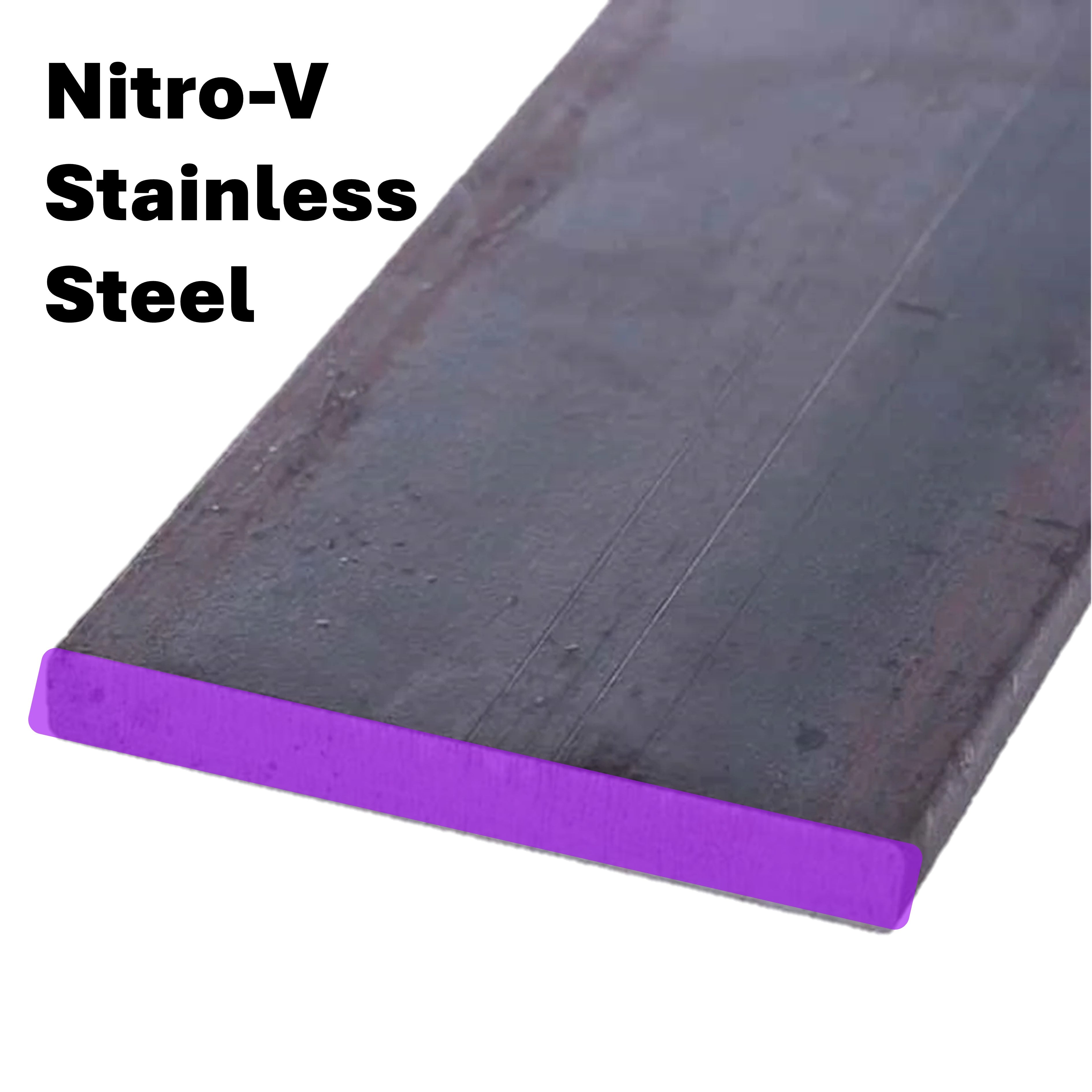Nitro-V - Stainless Blade Steel Flat Bars
This steel is supplied cold rolled and annealed. It has a smooth surface free of decarburisation or pitting and is soft and easily cut, ground, drilled, and filed.
NitroV is a nitrogen-enriched stainless steel developed as an improved version of AEB-L, offering higher corrosion resistance and toughness due to the addition of nitrogen and vanadium. Like AEB-L, NitroV features a fine-grained structure, providing excellent edge stability and toughness while being relatively easy to sharpen.
The carefully balanced alloy composition of NitroV ensures enhanced performance in edge retention, corrosion resistance, and overall durability, making it suitable for various applications, from kitchen knives to outdoor and tactical blades.
Composition
- Carbon – 0.68%
- Silicon – 0.50%
- Manganese – 0.40%
- Chromium – 12.50%
- Nitrogen – 0.10%
- Vanadium – 0.10%
- Iron – Balance
Performance Characteristics
-
Toughness 9/10 – Extremely high toughness, similar to AEB-L and higher than many stainless and tool steels. Suitable for various blade sizes, from small utility knives to larger tactical or survival knives.
-
Edge retention 4/10 – NitroV has improved edge retention compared to AEB-L due to its nitrogen and vanadium content, offering better resistance to abrasive wear while maintaining good edge stability. It strikes a balance between ease of sharpening and edge durability.
-
Corrosion resistance 8/10 – NitroV excels in corrosion resistance, surpassing AEB-L and performing similarly to other high-end stainless steels like CPM 154. Its nitrogen content enhances rust resistance, making it ideal for use in humid or corrosive environments.
Recommended Heat Treatment
- Coat blade in an anti-scale compound or seal in double crimped 321 or 309-grade stainless steel tool wrap
-
Austenitise – Heat to 1075°C and hold for 10-15 minutes
-
Quench between aluminum plates or oil quench
-
Cryogenic Treatment – Immerse in liquid nitrogen or dry ice slurry for 1 hour or more to convert retained austenite to martensite and increase hardness
-
Temper at 150-250°C for 2 hours, twice, depending on the desired hardness
Note: Lower austenitising temperatures may yield better results when not using cryogenic treatment. For example, 1050°C can be used with a freezer to achieve high hardness without liquid nitrogen or dry ice.
Approximate As-Quenched Hardness Before Tempering:
- 1075°C followed by liquid nitrogen – 63-64HRC
- 1075°C followed by dry ice – 62-63HRC
- 1050°C followed by freezer – 61HRC
Recommended Working Hardness
60-63HRC















